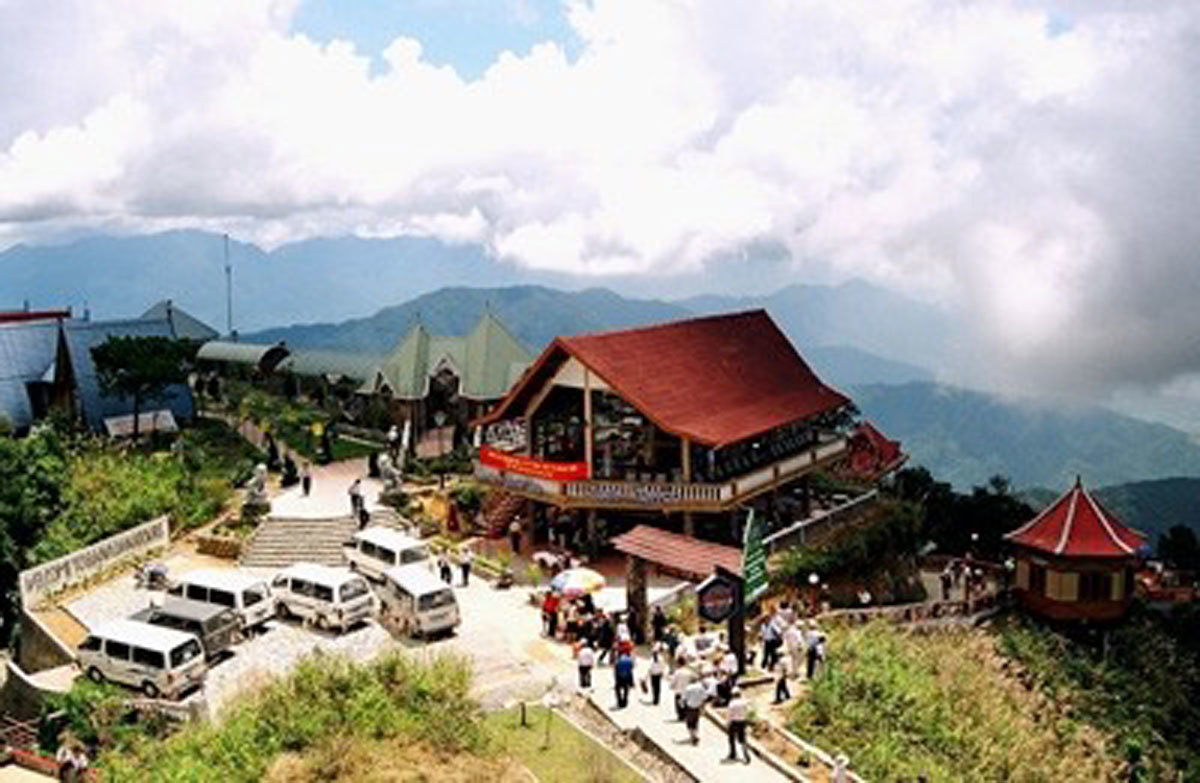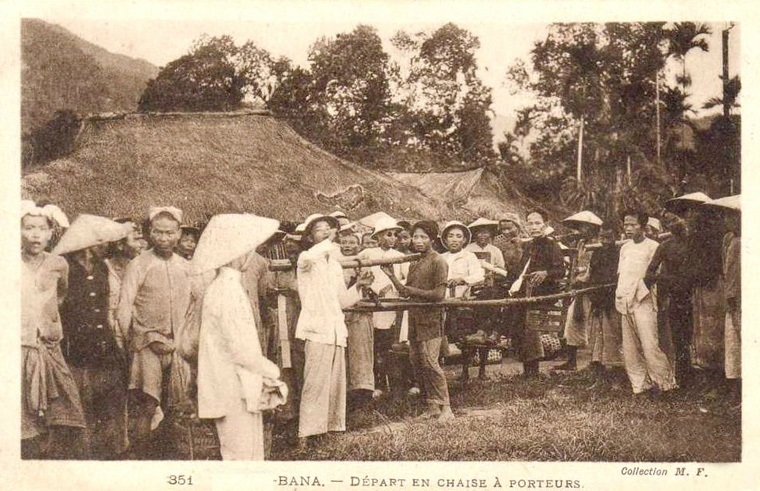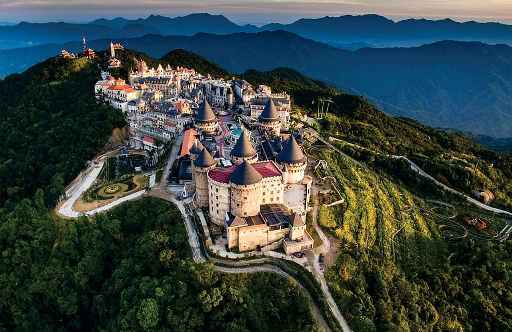But today, Ba Na Hills is a thriving tourist destination.
In the days of old…
 |
Le Anh Dung laughs at the memories of riding buses up to Ba Na, located high up in the hills overlooking Da Nang city in central Vietnam. “Maybe 11 or 12 years ago, I remember driving a group of 20 tourists from Phu Yen province - they were terrified and cried out, ‘Stop the car! Please turn back! We can’t go on!’” says Dung with a chuckle. “I said, ‘but the road is too skinny. I can’t turn back!’”
In those days, it took several hours just to reach Ba Na. “The tourists would be so relieved to arrive. They would enjoy the fresh air and savor views for a while but then sigh deeply when they realized they had to get back in the bus and ride to Da Nang,” says Dung.
 |
But travelling to Ba Na would eventually become much easier with the opening of Suoi Mo-Ba Na cable car system, which now transports passengers from the foot of Ba Na Mountain to the top in just 15 minutes. It was a breakthrough development for this small mountain town which hitherto had been a remote and barely accessible backwater.
Mr Vu Huy Thang, the Project Manager of Suoi Mo-Ba Na cable car system, shakes his head when recalling the first time he travelled to Ba Na with his research team and local leaders from Da Nang city: “We came here to make a survey in October 2007. It was rainy season in Ba Na and it was very gloomy. There were only a handful of tourists around.”
One of the first engineers to work on the cable car project, Trinh Van Ha remembers the challenge of getting to Ba Na vividly: “The road was filled with rocks, potholes and thick mud. It took us three hours to negotiate the dangerous twisting corners and reach Ba Na. All we could see were a few dilapidated French houses and a small number of guesthouses looming through the heavy fog. We were only 15km away from the center of Da Nang city, but it felt so remote.”
In 2008, the number of tourist arrivals to Da Nang had reached 20,000, but in those days, hardly anyone had even heard of Ba Na. Only intrepid travelers, and “real men”, dared to travel to Ba Na in those days. But that was soon to change.
“I was very fortunate to visit Ba Na Hills in 2008, when the cable car project of Sun Group was first launched,” says Le Quang Tung, Deputy Minister of Culture, Sports and Tourism. “I was very surprised when the group chose Ba Na Hills over a beachfront destination for investment. However, I realized that Sun Group had a long-term strategic vision focused on driving the tourism business of both the group and the city.”
 |
Now a must-see destination
For anyone who saw Ba Na over a decade ago, the transformation of Ba Na would appear miraculous. The once-ignored and remote mountain resort is thriving hub with tourists from Vietnam and all over the world. In fact, for many tourists flying into Da Nang today, Ba Na is not the side show but the main attraction. “For my travel company, we have noticed if we leave Ba Na Hills out of the itinerary, we have hardly any bookings,” says Mr. Phung Xuan Khanh, Director of Tien Phong Travel Company.
In the past decade, the number of visitors coming to Ba Na Hills rose by 160 fold while the number of tourists to Da Nang increased up to 463% over the past decade. In the last nine months especially, the Golden Bridge alone has attracted scores of tourists from new markets such as Thailand and the Middle East. After opening in June 2018, the bridge became an overnight sensation on social media. Now, for every three international visitors coming to Da Nang, two will visit Sun World Ba Na Hills. According to Mrs. Tran Thi Minh Duc - Head of Inbound Division of Vietrantour, many Asian customers from countries such as Japan, the Republic of Korea, India and China all wish to visit Ba Na Hills and Golden Bridge.
Da Nang, a thriving international hub
 |
Thanks to Ba Na Hills’ rising popularity, Da Nang is thriving, too. At the end of 2018, the central city was welcoming 23 international direct flights with a total of 328 flights each week. In the first two months of 2019, the number of flights from Thailand to Da Nang had been increased to 56 flights per week. While in 2008, the city had just 2,000 hotel rooms, by 2018 there were 21,000 rooms. Da Nang International Airport has also seen a remarkable increase in the number of passengers, receiving 2.1 million in 2009 but 13.3 million in 2018.
“Since Sun Group invested in redeveloping Ba Na Hills, the number of tourists coming to Da Nang has been increasing rapidly,” says Nguyen Tien Dat, Deputy Director of TransViet Travel Company. “Ba Na Hills is the must-visit destination in Da Nang for both the domestic and international customers of TransViet Travel.”
Dat adds that this surge in tourism has benefitted many associated sectors in Da Nang - transportation, food, shopping, accommodation, and recreation. Once most tourists coming to Central Vietnam stayed in resorts by the coast, and were more interested in visiting the historic old town of Hoi An, but today downtown Da Nang is thriving with tourists with the vast majority eagerly making their way to the cable car station to travel up to Ba Na Hills—Southeast Asia’s hottest, must-see destination.
The driver Le Anh Dung laughs again at thought of the 20 passengers, who once begged him to turn back, returning to Ba Na Hills today. Rather than slalom up the rocky mountain roads, they will effortlessly glide in a cable car cabin over the lush hills into Sun World Ba Na Hills and discover the once neglected mountain town has become a tourism Mecca that attracts millions of visitors each year thanks to a combination of stunning scenery and sweeping views, modern entertainment and fun-filled activities, iconic sights and man-made marvels, cultural festivals and gorgeous flower gardens, and much, much more besides. In so many wonderful ways, today Ba Na Hills will take your breath away.
PV